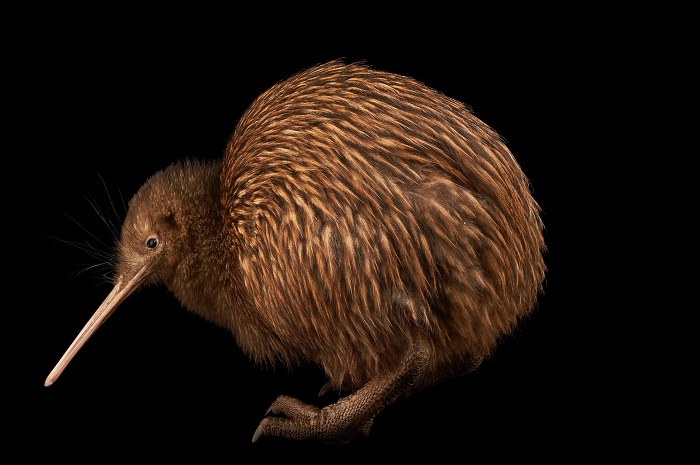How New Zealand’s Glaciers Shaped The Origin of the Kiwi Bird

Several million years ago, a small bird flew to New Zealand. Arriving there, it found few threats and plenty of opportunities. In the absence of mammals, its descendants gradually lost the ability to fly, as island birds are wont to do. They also evolved to fill those niches that mammals typically occupy, rootling around the leaf litter in search of worms and grubs. They transformed into that icon of New Zealand—the adorable, bumbling kiwi. Or rather, they transformed into the kiwis. Until recently, scientists recognized three species of kiwi that—the great spotted or roroa, the little spotted, and the brown, or tokoeka. They’re all much of a muchness; being nocturnal, they lack the bright colorful feathers that make most other birds so easy to identify. Still, keen observers could tell the difference. The great spotted, for example, is the largest of the three and has gray-brown feathers. The brown kiwi is a little smaller and a little redder. And the little spotted is the pipsqueak of the bunch. But in 1995, Allan Baker from the Royal Ontario Museum in Canada showed that the brown kiwi is actually three different species, now known as the North Island brown, the Okarito brown or rowi, and the southern brown or tokoeka. They are all physically similar but genetically distinct. So, three kiwi species became five—and even that figure didn’t capture how diverse these iconic birds truly are. Baker passed away two years ago, but his colleague Jason Weir continued his work. And he has shown that there are actually 11 genetically distinct lineages of living kiwis, as well as six that have gone extinct. It’s unclear if these all count as separate species, and Weir thinks that most of them are best viewed as subspecies. Regardless, his study shows that these endearing birds rival the more famous Galápagos finches as icons of diversification. Weir made use of blood samples from 203 kiwis, which Baker’s team had been collecting since the 1980s as part of conservation work. He compared the DNA of these individuals at hundreds of sites across their entire genomes. His analysis showed that the North Island brown kiwi consists of four separate lineages, each confined to a different corner of New Zealand’s north island. Likewise, the southern brown kiwi can also be split into four geographically separate groups. All of these would once have been classified as the “brown kiwi.”“Some of these lineages were thought to exist, but more data was necessary,” says Weir. “Others were never hinted at before.” Many of these lineages are very young, having diverged from one another within the last million years, and as recently as 110,000 years ago. “A lot of my colleagues would say that they’re separate species, but we have some hints that they’re not fully isolated,” says Weir. “We think they’re subspecies on the way to beocming distinctive species.” He thinks that glaciers that drove them apart. Glaciers are common throughout New Zealand and as they expand, they can cut kiwis off from one another, allowing them to chart their own evolutionary courses. “The kiwi is as close to a standard sessile mammal as you can get and still be a bird,” says Alan Cooper from the University of Adelaide. They don’t fly, so it’s very easy for physical barriers like glaciers to split populations in two.
Read More: http://news.nationalgeographic.com/2016/08/rise-of-kiwi-bird-new-zealand/

